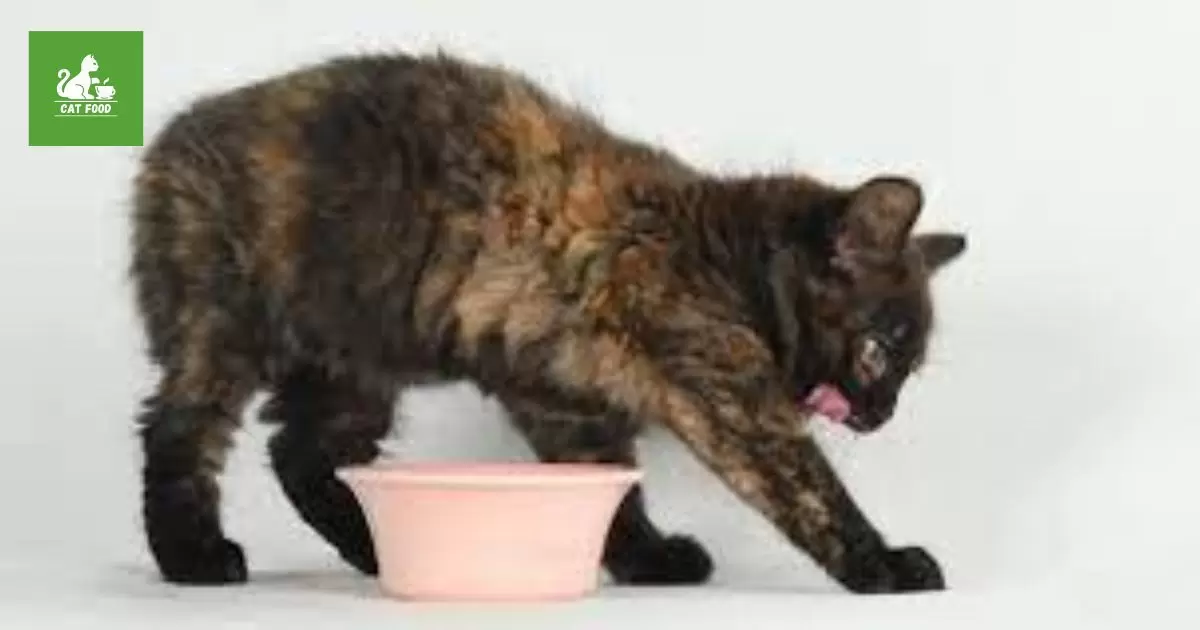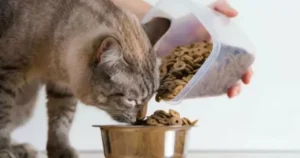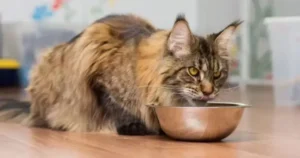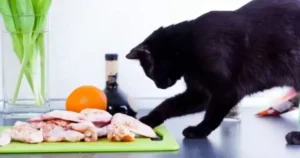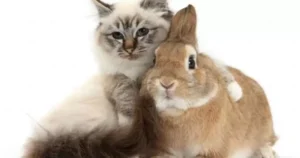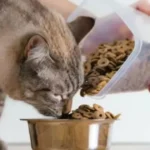Cats often exhibit the peculiar behavior of scratching the area around their food bowls before and after eating. This involves digging their front paws into the floor and raking back toward themselves, either delicately clawing or vigorously attacking the zone within about a foot of their dish. The scratching generally occurs right before eating, during the first bites, after finishing the meal, sporadically throughout dining, or a mix of these time points.
Have you ever wondered why cats scratch around their food? This strange ritual of felines sweeping their paws around their meals can seem baffling. Yet the reasons behind this peculiar clawing compulsion provide intriguing perspectives into some unique aspects of cats’ instincts and psychology.
When cats scratch around their dishes, they essentially stake a claim to the dining space as their own defended territory. They also engage in innate hunting behaviors, ensuring safety before eating, and keeping their personalized area clean. Gaining insight into this quirky custom can help owners appreciate why cats scratch before, during, and after eating.
What Does the Scratching Action Look Like?
The scratching motion cats make around their food involves digging their front paws into the floor and raking back toward themselves. Some cats delicately paw and scratch, while others vigorously attack the area with their claws extended. This scratching generally occurs in the zone immediately surrounding the food dish, within about a foot radius.
Cats may scratch around their food bowls.
- Right before eating
- In the first few bites of a meal,
- After finishing eating,
- Intermittently throughout the meal
- Or demonstrate a combination of these behaviors
So what drives cats to manifest this instinctive scratching impulse? Examining several leading theories can help unravel this mystery.
Marking their territory
One of the strongest explanations for this behavior relates to territorial marking. By scratching around their food, cats essentially stake their claim to an area, demonstrating, This is my space!
In the wild, cats must protect and defend prized food sources from competitors. Ringing a meal with scratch marks sends a clear “back off!” warning. Even when safely ensconced in domestic settings, this primal territorial impulse remains intact.
Cats also have specialized sweat glands concentrated in their paws. Scratching and clawing around their food enables them to impart their unique scent onto the chosen eating location. Scent marking further registers the spot as their exclusive dining zone.
By staking their claim with sensory clues both visual scratches and odor cues cats satisfy the innate need to safeguard essential resources. These “keep out!” signals proclaim a cat’s food and feeding area as inviolable territory.
Prey-Hunting Instincts
Another key driver relates to core cat predatory behaviors. In the wild, cats scratch and dig at the ground to expose hiding or burrowing prey such as mice, voles, and other small animals. The mealtime scratching ritual evokes this hard-wired hunting sequence.
Cats often scratch around their food in the same goal-oriented manner as unearthing hidden foes. Sweeping away debris seemingly triggers their food drive and prepares the brain for eating. Much like bulldozing away dirt or vegetation to find prey, scraping the area around their dish shifts cats into food consumption mode.
Adding a litter mat around feeding zones can amplify this murderous mindset. The scratchable texture and digging action engage the kitty’s fierce inner lion, whetting appetites for the ensuing feast.
Safety Precautions
Cats also scratch to ensure safety before engaging in the vulnerable act of eating. In the exposed wilderness environment, predators abound. Cats must constantly monitor for looming dangers before chowing down.
The area scan has become so ingrained that even pampered house cats feel compelled to perform safety sweeps. Scratching around their dish provides a reassuring sensory sweep for potential threats. Only once they determine the zone secure will cats comfortably settle into a feast.
Hygiene Reasons
Additionally, scratching around food plays a cleansing role for suspicious felines. Outdoors, cats often eat in less than pristine settings swarmed by insects and vermin. Swiping away debris helps fashion a cleaner dining experience.
This fastidious ritual persists even when people provide the most sparkling dishes in a protected environment. Scratching remains a way for discerning cats to sanitize their personal spaces.
Psychological Comfort
For anxious cats, scratching also supplies psychological comfort by claiming ownership. Shy cats often race to food bowls but hesitate to eat until after scratching around the dish.
Much like people nervously tap fingers or shuffle feet, this scratching keeps cats’ minds at ease. It reaffirms their secure footing and rights to the food before them. Only after scratching’s calming affirmation will they finally settle down to eat.
When Should Cat Owners Intervene?
For the most part, mealtime scratching remains a harmless facet of natural feline behavior. As long as the demolition zone stays confined typically to the mat or immediate floor around food dishes, owners need not intervene. Restricting scratching to these zones rather than say…couch cushions and curtains is key.
In some scenarios, however, scratching does require redirection:
- Excessive noise – Loud, rampant floor scratching especially at night may disrupt household members. Cat owners can apply double-sided sticky tape or anti-scratch mats around problem dining areas.
- Aggression – Over food aggression can spark mealtime scratching resembling a crouched tiger. Hissing, swatting, or biting during intense scratching needs immediate intervention. Owners should initiate a retraining protocol to relax defensive behavior.
- Unhygienic conditions – Scratching around food bowls directly on carpets or near human seating/dining areas risks unhealthy bacteria exposure and filth monitoring is advised. Litter mats, towels, or placemats under bowls help curtail contamination.
While scratching around food might initially seem odd, it arises from cats’ ancestral need to secure resources. This custom now embedded in feline DNA ranks as perfectly normal kitty behavior. By understanding its instinctive roots, cat owners can fully appreciate why cats scratch around their Temptations Cat Food. Respecting this quirky yet important ritual makes for harmonious cat-human mealtimes.
FAQ’s:
Why do felines sweep their paws around dishes?
To claim and mark the area as their territory before eating.
What hunting habit does scratching food bowls bring out?
It relates to cats’ instinct to unearth hidden prey.
Is scratching around food a safety precaution?
Yes, ensuring no threats before vulnerable eating.
Why keep scratching from clean kitchen floors to bowls?
To sanitize dining spaces like wilderness scavenging.
Does meal scratch comfort anxious or timid cats?
Indeed, it affirms their secure personal food rights.
Conclusion:
Cats have interesting behaviors around their food bowls. One common behavior is that they scratch around their food. Why do cats scratch around food? It turns out they have leftover instinctual habits from their wild ancestors. Scratching and digging motions are connected to covering up food to save it for later. So even domestic house cats retain this instinct.
Common cat behaviors often relate to their ancestral habits. Scratching and digging around food bowls stems from an inherited tendency to bury meals to preserve them. That answers the question why do cats scratch around food? It’s simply an old survival instinct that remains in today’s felines. Understanding the history behind these quirky cat mannerisms helps explain why our furry friends do the cute and silly things they do.
